Understanding Molly: The Drug Behind the Addiction
Molly, a street name for MDMA (3,4-Methylenedioxymethamphetamine), has gained significant popularity in party/musical scenes and music festivals. While many users believe Molly is a “pure” form of MDMA, this common misconception puts countless lives at risk.
What you need to know about Molly:
- Molly typically comes in powder or crystalline form
- It’s marketed as a “cleaner” version of Ecstasy
- The drug often contains dangerous adulterants and synthetic chemicals
- Many samples sold as Molly contain zero MDMA
The reality of Molly is far from its falsely “safe” reputation. Drug dealers frequently mix or substitute MDMA with harmful substances like:
- Bath salts
- Methamphetamine
- Synthetic cathinones
- Cocaine
- PCP
Recent studies reveal that 60% of Molly samples tested at music festivals contained zero MDMA, highlighting the unpredictable nature of using this drug. Users never truly know what they are consuming.
The drug’s popularity stems from its promised effects:
- Intense feelings of pleasure
- Enhanced sensory experiences
- Increased energy
- Emotional warmth
- Social connection
Understanding Molly’s true nature is crucial – it’s not the pure, harmless substance many believe it to be. This synthetic drug carries serious risks including addiction, regardless of its widespread acceptance in certain social circles.
If you or a loved one is struggling with such an addiction, it’s essential to seek help.
The Allure and Dangers of Molly
Molly is classified as a Schedule I drug by the DEA, which means it has a high potential for abuse and no accepted medical use. Its chemical structure changes the brain’s natural chemistry, resulting in strong euphoric effects that can have harmful outcomes.
Forms of Molly
You’ll typically encounter Molly in two main forms:
- Pure crystalline powder in capsules
- Loose powder for direct consumption
- Pressed tablets (though less common)
How Molly Affects the Brain
The way Molly interacts with the brain leads to a series of complex chemical reactions:
1. Serotonin Release
- Triggers intense feelings of happiness, due to its impact on serotonin levels
- Creates a sense of emotional closeness
- Increases energy levels dramatically
2. Dopamine Impact
- Enhances pleasure sensations
- Boosts motivation and reward feelings
- Creates potential for addictive behavior
3. Norepinephrine Effects
- Raises heart rate and blood pressure, similar to the body’s natural response to norepinephrine
- Increases alertness and energy
- Can cause dangerous body temperature spikes
The Dangers of Molly’s Chemical Nature
Molly’s chemical composition poses significant dangers – dealers frequently mix it with other drugs such as methamphetamine, ketamine, or synthetic cathinones. These combinations can lead to unpredictable and potentially deadly effects on the body.
Disruption to the Brain’s Chemical Balance
Each time Molly is used, it greatly disrupts the delicate chemical balance in the brain. The drug forces neurons to release large quantities of neurotransmitters, depleting natural reserves and possibly causing long-lasting harm to vital neural pathways.
Understanding Relapse Prevention Techniques
Considering the severe risks linked to Molly use, it’s crucial to grasp relapse prevention techniques for drug and alcohol addiction. These methods can assist individuals in steering clear of addiction traps and continuing their recovery journey.
Recognizing the Signs: Is Someone You Know Struggling with Molly Addiction?
Spotting Molly addiction requires understanding its progressive nature. Regular MDMA use creates a tolerance, pushing users to take larger doses for the same euphoric effects. This pattern leads to physical and psychological dependence.
Key Physical Signs:
- Significant weight loss
- Dehydration and excessive sweating
- Jaw clenching and teeth grinding
- Sleep disturbances
- Muscle tension
- Blurred vision
Behavioral Changes:
- Increased isolation from family and friends
- Financial difficulties due to drug expenses
- Neglecting responsibilities
- Continuing use despite negative consequences
- Spending excessive time obtaining or recovering from Molly
When someone stops using Molly, withdrawal symptoms typically emerge within 12-24 hours:
- Intense drug cravings
- Severe depression and anxiety
- Memory problems
- Difficulty concentrating
- Fatigue and insomnia
- Paranoia
- Loss of appetite
These withdrawal symptoms can persist for days or weeks, making it challenging for users to quit without support. The intensity of withdrawal often drives users back to Molly, creating a cycle of addiction that becomes increasingly difficult to break.
The psychological grip of Molly addiction manifests through persistent thoughts about the drug and an inability to enjoy activities without it. Users might experience mood swings, irritability, and difficulty maintaining relationships.
Understanding the Mental Health Implications of Molly Use Disorder
Molly addiction creates a complex web of mental health challenges that extend far beyond the immediate effects of the drug. The relationship between MDMA use and mental health disorders often becomes a destructive cycle – each condition intensifying the other.
Common Mental Health Issues Associated with Molly Use:
- Severe anxiety disorders
- Clinical depression
- Panic attacks
- Paranoid thoughts
- Persistent mood swings
- Sleep disorders
Many users experience what’s known as “Molly Blues” – a state of deep depression that occurs days after use. This happens because MDMA depletes the brain’s serotonin reserves, leaving users unable to experience natural feelings of happiness and well-being.
Research shows that regular Molly users face a 40% higher risk of developing clinical depression compared to non-users. The drug’s impact on brain chemistry can trigger underlying mental health conditions or worsen existing ones.
The presence of both substance use disorder and mental health issues creates a dual diagnosis situation. This combination requires specialized treatment approaches that address both conditions simultaneously. Traditional therapy methods often prove insufficient when dealing with the unique challenges of MDMA-related mental health complications.
Users with pre-existing mental health conditions face heightened risks. The drug’s ability to alter brain chemistry can intensify symptoms of anxiety disorders, bipolar disorder, and other psychiatric conditions.
For those grappling with such challenges, seeking professional help is crucial. Specialized programs like the Mental Health Treatment in Cincinnati, Ohio offered by Cedar Oaks Wellness, can provide the necessary support and resources for recovery. Additionally, for individuals concerned about insurance coverage for their treatment, it’s worth exploring options such as drug rehab that accepts Anthem, which can alleviate some financial burdens associated with seeking help.
From Party Drug to Lifelong Struggle: The Long-Term Consequences of Molly Abuse
The recreational use of Molly can lead to permanent changes in brain structure and function. Research shows that regular MDMA use causes significant serotonin depletion, triggering a cascade of neurological consequences:
1. Brain Chemistry Disruption
- Severe damage to serotonin-producing neurons
- Reduced ability to naturally produce serotonin
- Disrupted neural pathways affecting mood regulation
2. Cognitive Function Decline
- Impaired verbal memory
- Decreased attention span
- Reduced problem-solving abilities
- Difficulty processing complex information
3. Emotional Processing Changes
- Heightened emotional reactivity
- Inability to regulate mood swings
- Persistent feelings of emotional numbness
- Increased risk of aggressive behavior
Studies reveal that heavy Molly users experience lasting brain alterations visible on brain scans. These changes can persist years after stopping MDMA use, with some users never regaining their full cognitive abilities.
The damage extends beyond mental processing – users often report physical symptoms like:
- Chronic sleep disturbances
- Persistent headaches
- Reduced appetite control
- Muscle tension
- Memory gaps
Research indicates that the severity of these long-term effects correlates directly with the frequency and duration of Molly use. Young adults are particularly vulnerable, as their developing brains face higher risks of permanent damage from MDMA exposure.
Breaking Free from the Grip of Molly Addiction: Treatment Approaches That Work!
Breaking free from Molly addiction requires a comprehensive treatment approach. While no FDA-approved medications specifically target MDMA use disorder, medical professionals can prescribe medications to manage specific withdrawal symptoms like anxiety and depression. It’s important to note that even healthcare professionals can struggle with addiction, which highlights the need for effective treatment options.
The cornerstone of effective treatment lies in behavioral interventions:
- Cognitive Behavioral Therapy (CBT) helps you identify triggers, develop coping strategies, and reshape negative thought patterns associated with drug use.
- Motivational Enhancement Therapy (MET) strengthens your commitment to change and builds internal motivation for recovery.
- Group Therapy provides peer support, shared experiences, and practical strategies from others in similar situations.
Treatment programs typically include:
- Medical supervision during initial withdrawal
- Individual counseling sessions
- Support group participation
- Life skills training
- Stress management techniques
- Relapse prevention education
The duration and intensity of treatment vary based on individual needs. Some people benefit from intensive outpatient programs, while others require residential treatment facilities like those offered by Cedar Oaks Wellness Center, which accepts many insurance providers for drug and alcohol treatment. Your treatment team will assess factors like:
- Length and severity of addiction
- Co-occurring mental health conditions
- Support system availability
- Previous treatment experiences
Success in recovery depends on active participation in therapy sessions and consistent application of learned coping strategies. Regular attendance at support groups and ongoing counseling sessions helps maintain sobriety and prevents relapse.
In addition to these approaches, it’s essential to understand the neurobiological aspects of addiction as they can provide valuable insights into one’s behavior and help tailor more effective treatment strategies.
Supporting Recovery: Navigating Challenges on the Path to Sobriety
Stress management plays a crucial role in maintaining sobriety during Molly addiction recovery. Here are proven strategies to help you navigate this challenging journey:
1. Build a Strong Support Network
- Connect with sober friends and family members
- Join support groups or recovery communities
- Maintain regular contact with your therapist or counselor
2. Develop Healthy Coping Mechanisms
- Practice mindfulness meditation
- Engage in regular physical exercise
- Keep a recovery journal to track triggers and emotions
3. Create Daily Structure
- Establish consistent sleep patterns
- Plan balanced meals
- Set achievable goals and celebrate small wins
4. Stress-Relief Activities
- Deep breathing exercises
- Progressive muscle relaxation
- Nature walks or outdoor activities
- Creative pursuits like art or music
5. Identify and Manage Triggers
- Learn to recognize high-risk situations
- Develop specific action plans for each trigger
- Practice saying “no” to social situations that might compromise recovery
Finding the right environment for recovery is essential. If you’re considering professional help, it’s worth exploring options such as the best rehab center in Ohio, which can provide structured support and resources tailored to your needs.
Remember: stress is a natural part of life, but it doesn’t have to derail your recovery. Each day you practice these coping strategies strengthens your resilience against relapse. Your recovery journey is unique, and it’s okay to adjust these techniques to fit your personal needs and circumstances.

